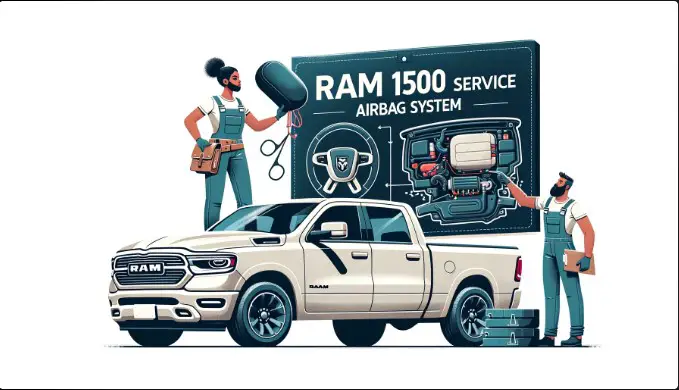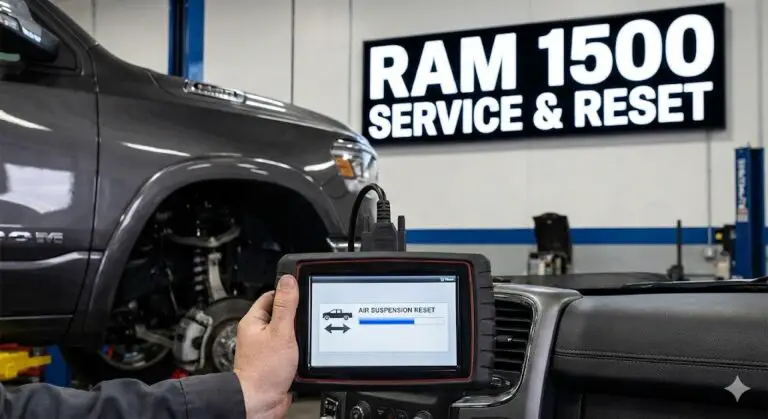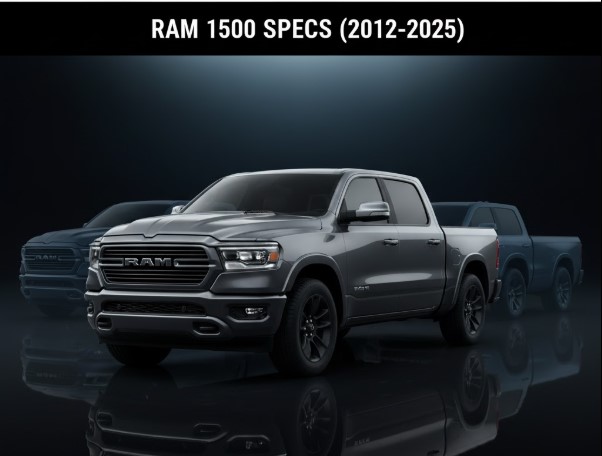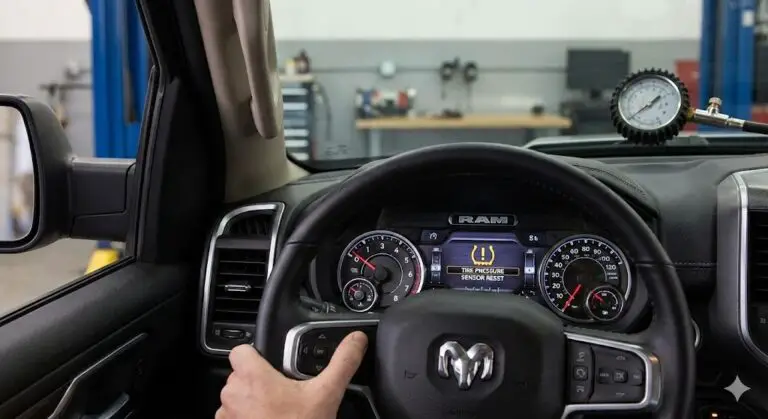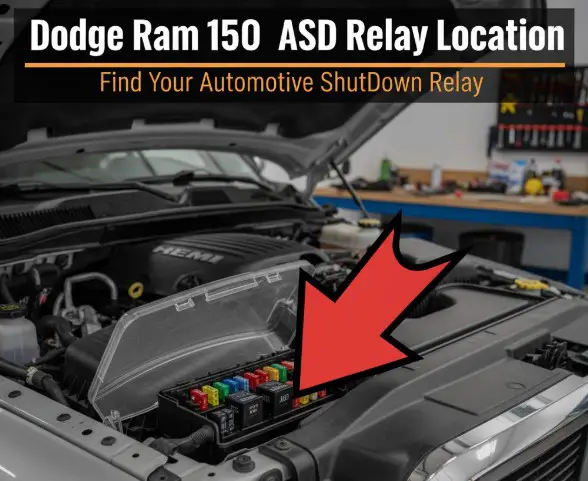Dodge Ram 1500 Diesel Swap: Transform Your Truck Today
The Dodge Ram 1500, renowned for its robust performance and versatility, offers a unique opportunity for truck enthusiasts and professionals alike – the diesel engine swap. This process, involving the replacement or upgrade of the truck’s existing engine with a diesel variant, is more than just a mechanical alteration; it’s a transformation that unleashes new levels of power, efficiency, and reliability.
Whether it’s about enhancing performance, ensuring greater fuel efficiency, or simply breathing new life into an older model, diesel swaps in Dodge Ram 1500 trucks are a topic of keen interest among the trucking community.
In this comprehensive guide, you will find:
- Insights into various diesel engine options and their specific advantages.
- Technical Considerations for Diesel Engine Swaps.
- A step-by-step guide to executing a diesel engine swap.
- Legal and regulatory factors to keep in mind.
- The Cummins 5.9 Swap: Enhancing Performance.
- Cost analysis, and troubleshooting tips to ensure a smooth swap process.
Equipped with this knowledge, you’ll be well-prepared to embark on your Dodge Ram 1500 diesel swap journey, transforming your truck into a machine that not only meets but exceeds expectations.
Evaluating Engine Swap Options for Dodge Ram 1500
When considering a diesel engine swap for your Dodge Ram 1500, it’s crucial to understand the range of options available and how they align with your truck’s model and your performance goals. Here, we’ll explore some popular diesel engine choices and their implications.
Cummins Diesel Engines: The Powerhouse Choice
- Overview: Cummins engines, particularly the 5.9 and 6.7-liter variants, are a popular choice for their robust performance and reliability.
- Pros:
- High Torque Output: Ideal for heavy towing and high-stress tasks.
- Longevity: Known for enduring high mileage with proper maintenance.
- Cons:
- Complex Installation: This may require significant modifications, including transmission and drivetrain adjustments.
- Cost: Generally more expensive than other options.
EcoDiesel Engines: Balancing Efficiency and Performance
- Overview: The 3.0L EcoDiesel engine, specifically designed for the Ram 1500, offers a good blend of efficiency and power.
- Pros:
- Fuel Efficiency: Superior to many gasoline engines, reducing operational costs.
- Smooth Operation: Known for its quiet and smooth performance.
- Cons:
- Power Limitations: While efficient, it may not match the raw power of larger diesel engines.
- Compatibility Issues: Best suited for newer Ram 1500 models.
HEMI Engine Conversion: A Unique Proposition
- Overview: Though not a diesel engine, the 5.7L HEMI conversion is a notable mention for those seeking a balance between diesel-like torque and gasoline engine responsiveness.
- Pros:
- High Horsepower: Provides a significant boost in power.
- Availability of Parts: Easier to find components and support due to its popularity.
- Cons:
- Fuel Efficiency: Less efficient than diesel options.
- Complexity: Requires extensive modifications for a successful swap.
Custom Engine Builds: For the Enthusiast
- Overview: Custom-built engines or rare diesel swaps (like older Mercedes diesel engines) cater to enthusiasts seeking a unique setup.
- Pros:
- Uniqueness: Provides a one-of-a-kind vehicle with distinct characteristics.
- Tailored Performance: Engine characteristics can be tailored to specific needs.
- Cons:
- High Cost and Complexity: Custom builds are often expensive and complex.
- Reliability Concerns: Without a proven track record, these engines might pose reliability risks.
Understanding these options is crucial in making an informed decision for your Dodge Ram 1500 diesel swap. Each option has its own set of challenges and benefits, and the choice largely depends on your specific needs, technical expertise, and budget.
Technical Considerations for Diesel Engine Swaps
Embarking on a diesel engine swap for your Dodge Ram 1500 is not just about choosing the right engine. It involves a comprehensive understanding of various technical factors to ensure a successful and efficient swap. Here are key considerations to keep in mind:
Compatibility and Fitment
- Engine Size and Mounts: Ensure the chosen diesel engine physically fits in your truck’s engine bay. This may require custom engine mounts or modifications to the existing frame.
- Drivetrain Compatibility: The engine must be compatible with your truck’s transmission and drivetrain. In some cases, transmission upgrades or replacements may be necessary.
Electrical and Electronic Systems
- Wiring Harness Modifications: Adapting the engine’s wiring harness to integrate with your truck’s electrical system is often required. This can be complex, especially with newer models having sophisticated electronics.
- ECU and Programming: The Engine Control Unit (ECU) may need reprogramming or replacement to manage the new engine effectively.
Exhaust and Emission Controls
- Custom Exhaust System: Depending on the engine, a custom exhaust system might be needed to ensure optimal performance and meet emission standards.
- Emission Compliance: Ensure that the swap meets local emission regulations, especially if you’re in an area with strict emission controls.
Cooling and Air Intake Systems
- Upgraded Cooling System: Diesel engines typically require robust cooling systems. Upgrading radiators, fans, and associated components is often necessary.
- Air Intake Modifications: Adequate air intake is crucial for diesel engine performance. Modifying or upgrading the air intake system might be required.
Fuel System Adjustments
- Diesel Fuel Tank and Lines: Converting to a diesel engine may necessitate changing the fuel tank and fuel lines to accommodate diesel fuel.
- Fuel Pump and Injectors: The fuel pump and injectors must be suitable for the specific diesel engine, ensuring efficient fuel delivery and combustion.
Suspension and Braking Enhancements
- Suspension Adjustments: The weight difference of the new engine may require suspension modifications to maintain vehicle balance and handling.
- Brake System Upgrade: More powerful engines might need an upgraded braking system to ensure safety and control.
Considering these technical aspects is crucial for a successful diesel engine swap in a Dodge Ram 1500. Adequate planning, understanding of your truck’s specifications, and consultation with experienced professionals can greatly aid in this complex but rewarding process.
Step-by-Step Guide to Swapping an EcoDiesel Engine
Swapping an EcoDiesel engine into a Dodge Ram 1500 can rejuvenate the truck with enhanced efficiency and performance. Here’s a detailed guide to help you through this process:
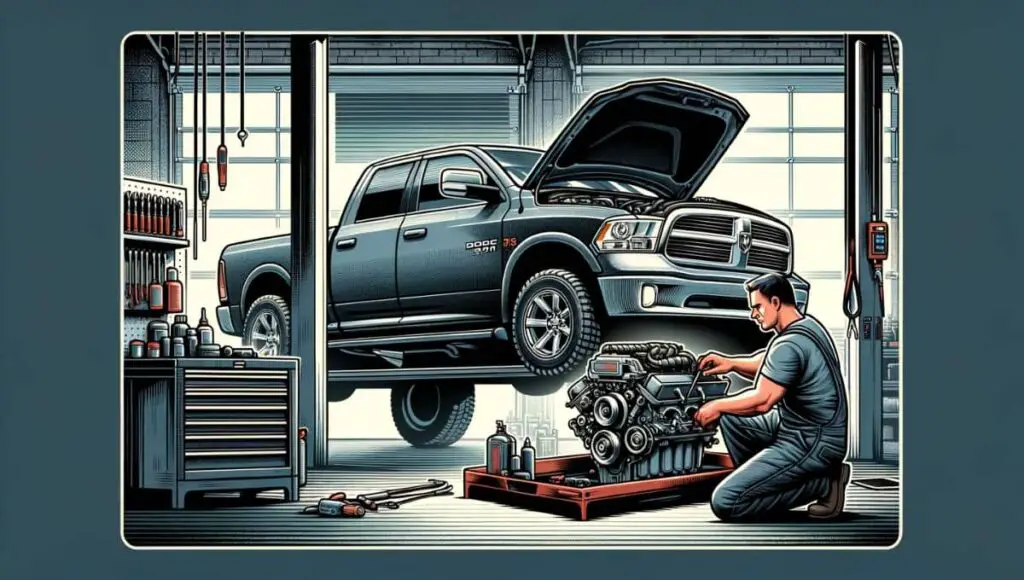
Preparation and Planning
- Assess Compatibility: Confirm that the EcoDiesel engine is compatible with your Dodge Ram 1500 model.
- Gather Necessary Tools and Equipment: Ensure you have all the required tools, including engine hoists, wrenches, and diagnostic tools.
Removing the Existing Engine
- Disconnect Battery: Always start by disconnecting the battery to ensure safety.
- Drain Fluids: Drain all fluids from the existing engine to prevent spills and contamination.
- Disconnect Components: Carefully disconnect all components linked to the engine, including the exhaust, fuel lines, and electrical connections.
- Remove the Engine: Use an engine hoist to carefully lift and remove the old engine from the truck.
Installing the EcoDiesel Engine
- Prepare the New Engine: Inspect and prepare the EcoDiesel engine, ensuring it’s ready for installation.
- Position the Engine: Carefully lower the EcoDiesel engine into the engine bay, aligning it with the motor mounts.
- Secure the Engine: Once aligned, secure the engine to the mounts and ensure it’s properly fitted.
Reconnecting Components
- Electrical and Fuel Systems: Reconnect the electrical wiring and fuel system. Pay special attention to the ECU and ensure it’s properly configured.
- Exhaust and Cooling Systems: Attach the exhaust system and cooling components, making any necessary modifications for fitment.
- Final Checks and Tests: Conduct thorough checks to ensure all connections are secure. Refill fluids and perform a test start.
Post-Installation Adjustments
- Fine-tuning: Make any necessary adjustments to the engine settings for optimal performance.
- Road Testing: Take your truck for a test drive to ensure everything is functioning smoothly.
Safety Precautions and Best Practices
- Double-Check Connections: Always double-check all connections and fittings to ensure safety and reliability.
- Consult Manuals and Guides: Refer to service manuals for specific instructions related to your truck model.
- Seek Professional Assistance: If unsure about any step, seek assistance from a professional mechanic.
This guide provides a general overview of the process, but remember, each swap can present unique challenges. Being prepared, thorough, and cautious at each step is key to a successful EcoDiesel engine swap.
The Cummins 5.9 Swap: Enhancing Performance
The Cummins 5.9 diesel engine swap is a sought-after modification for Dodge Ram 1500 owners looking to significantly boost performance. This section outlines the advantages and technical specifics of this swap.
Why Choose a Cummins 5.9?
- Renowned Reliability and Durability: The Cummins 5.9 is known for its longevity and robustness, especially in demanding conditions.
- Impressive Torque and Power: Ideal for towing and heavy-duty use, this engine provides a remarkable increase in torque and horsepower.
- Fuel Efficiency: Despite its power, the Cummins 5.9 is relatively fuel-efficient, making it a practical choice for regular use.
Technical Aspects of the Swap
- Engine Compatibility: The Cummins 5.9 can be fitted into various Dodge Ram 1500 models, but it requires significant modifications due to its size and power output.
- Transmission Considerations: Upgrading the transmission is often necessary to handle the increased torque and power.
- Custom Fabrication: Custom motor mounts, exhaust systems, and cooling solutions are typically required for this swap.
Installation Steps
- Engine and Transmission Preparation: Ready the Cummins 5.9 engine and the chosen transmission for installation.
- Mounting and Alignment: Custom mounts are used to properly align and secure the engine in the engine bay.
- Systems Integration: Integrate the engine with the truck’s fuel, exhaust, cooling, and electrical systems.
Post-Installation Adjustments
- ECU Tuning: Optimize the engine’s performance through careful ECU tuning and programming.
- Driveability Testing: Extensive testing is crucial to ensure the swap’s success and the vehicle’s reliability.
Potential Challenges
- Weight Distribution: The Cummins 5.9 is heavier than most stock engines, affecting the truck’s handling and suspension.
- Regulatory Compliance: Ensure the swap meets emission and safety standards, which can vary by region.
Undertaking a Cummins 5.9 swap in a Dodge Ram 1500 transforms the truck into a powerhouse, suitable for a range of heavy-duty applications. While challenging, the end result is often a highly capable and reliable truck that stands out both in performance and durability.
Legal and Regulatory Considerations
Performing a diesel engine swap in a Dodge Ram 1500 involves not just mechanical expertise but also an awareness of legal and regulatory requirements. This section provides an overview of the key considerations to ensure your engine swap is legally compliant and safe.
Emission Standards Compliance
- Understanding Emission Regulations: Different regions have varying emission standards. It’s crucial to know the regulations in your area to ensure your swapped engine meets these standards.
- Emission Control Systems: Ensure that the new engine is equipped with proper emission control systems, such as catalytic converters and particulate filters, as required by law.
Safety Regulations
- Inspections and Certifications: Some regions require that vehicles with engine swaps undergo inspections and certifications to ensure they are roadworthy and safe.
- Brake and Suspension Safety: Due to the increased power and weight of a new engine, it’s important to check that the vehicle’s braking and suspension systems are up to standard.
Insurance and Registration Implications
- Informing Insurance Providers: Notify your insurance company of the engine swap, as it may affect your policy and coverage.
- Vehicle Registration Updates: Updating your vehicle registration to reflect the engine change may be required, depending on local laws.
Keeping Records
- Documentation of the Swap: Keep detailed records of the swap process, including receipts, certifications, and inspection reports. This documentation can be crucial for insurance, resale, and legal purposes.
Adhering to Local Laws
- Consulting with Local Authorities: If in doubt, consult with local transportation authorities or legal experts to understand the specific requirements and steps needed to legalize your engine swap.
By staying informed and compliant with these legal and regulatory aspects, you can enjoy the benefits of your diesel engine swap without facing legal complications or safety issues.
Cost Analysis of Diesel Engine Swaps
Understanding the cost implications is crucial when considering a diesel engine swap for your Dodge Ram 1500. This section provides a breakdown of the expenses involved, offering insights for budgeting and planning.
Engine and Components Costs
- Engine Purchase: The cost of the diesel engine itself is the most significant expense. Prices vary widely based on the engine type and whether it’s new or used.
- Additional Parts: Custom mounts, transmission upgrades, exhaust systems, and cooling components can add considerably to the total cost.
Labor and Installation Expenses
- Professional Installation: If you’re not performing the swap yourself, professional mechanic fees can be substantial, depending on the complexity of the swap.
- DIY Installation: For those undertaking the swap themselves, consider the cost of tools and equipment needed.
System Upgrades and Modifications
- Upgraded Components: Additional expenses may arise from necessary upgrades to the fuel system, electrical system, and drivetrain.
- Custom Fabrication: Any custom work required, like fabricating engine mounts or exhaust systems, will increase costs.
Testing and Tuning
- Diagnostics and Tuning: Post-installation testing and engine tuning to optimize performance can incur additional costs.
- Troubleshooting and Adjustments: Budget for potential unforeseen expenses arising from the need to troubleshoot and make adjustments.
Regulatory Compliance
- Emission and Safety Compliance: Meeting emission standards and safety regulations might require additional modifications, adding to the expense.
Overall Budgeting Tips
- Accurate Estimation: Start with a comprehensive estimate of all potential costs before beginning the swap.
- Contingency Fund: Set aside a contingency fund (around 10-20% of the total budget) to cover unexpected expenses.
- Cost vs. Benefit Analysis: Weigh the costs against the expected benefits, such as improved performance and increased vehicle value.
A diesel engine swap can be a significant investment, but with careful planning and budgeting, it can also be a rewarding enhancement to your Dodge Ram 1500.
Common Mistakes and Troubleshooting in Diesel Engine Swaps
Navigating a diesel engine swap in your Dodge Ram 1500 can be challenging. Being aware of common pitfalls and having troubleshooting strategies is key to a successful project.
Typical Challenges and Mistakes
Inadequate Planning
Failing to fully understand the scope of the project, including time, cost, and technical requirements, is a common error. Proper planning is crucial to avoid underestimation of resources needed.
Mismatched Components
Using parts that aren’t compatible with each other or with your truck can lead to mechanical and electrical integration issues. Ensuring compatibility is essential for a smooth swap.
Overlooking Legal and Safety Aspects
Neglecting emission standards and safety regulations can result in legal issues and create safety hazards. Compliance with these aspects is critical.
Improper Tool Use
Utilizing incorrect or inadequate tools can damage parts and extend the project duration. The right tools are necessary for effective and safe installation.
Troubleshooting Tips
Thorough Research and Preparation
Conduct extensive research on your truck model and the engine you plan to install. This helps in anticipating and mitigating compatibility issues.
Consultation with Experts
Engaging with professionals or experienced individuals, such as in truck forums, can offer valuable advice and prevent common mistakes.
Regular Testing During Installation
Testing various components during the installation process can identify problems early, making them easier to address.
Adherence to Manufacturer Guides
Following guidelines from the engine and truck manufacturers ensures correct installation and operation, minimizing errors.
Solutions to Specific Problems
Engine Not Starting
Check all electrical connections, fuel supply, and ensure proper engine grounding. Verify that the Engine Control Unit (ECU) is correctly programmed for the new engine setup.
Vibration or Misalignment
Re-examine engine mounts and alignment. Ensure the drivetrain is properly balanced to prevent vibration issues.
Overheating
Assess the cooling system’s adequacy. Upgrades to the radiator or cooling fans might be necessary for optimal engine temperature regulation.
Emission Compliance Issues
If facing emission compliance challenges, consulting with a specialist to adjust the exhaust system and emission controls is advisable.
Best Practices for a Successful Swap
Keeping Detailed Records
Maintain comprehensive records of all changes, modifications, and parts used. This documentation is vital for future maintenance and potential inspections.
Investing in Quality Parts
Opting for high-quality components can prevent frequent repairs and breakdowns, offering long-term savings and reliability.
Patience and Attention to Detail
A meticulous approach to each step of the engine swap process can prevent many issues, ensuring a smoother and more successful project.
Understanding these common challenges and applying effective troubleshooting methods will aid in navigating the complexities of a diesel engine swap in your Dodge Ram 1500.
Conclusion
In the end, swapping a diesel engine into your Dodge Ram 1500 is like giving your truck a whole new life. It’s about more than just power; it’s about making your ride truly yours. This guide has covered everything from choosing the right engine to the nitty-gritty of getting your hands dirty.
Remember, whether it’s for better pull, savings at the fuel pump, or just for the sheer joy of it, your truck’s transformation is in your hands. Dive into this adventure with confidence and make your Ram roar!


